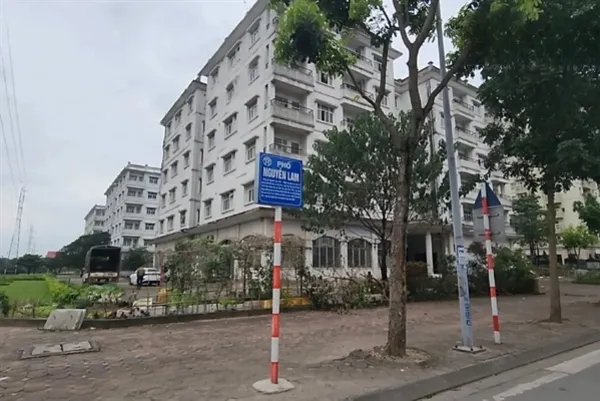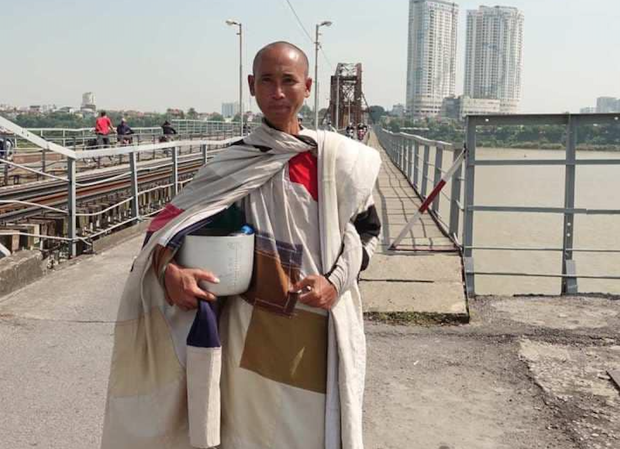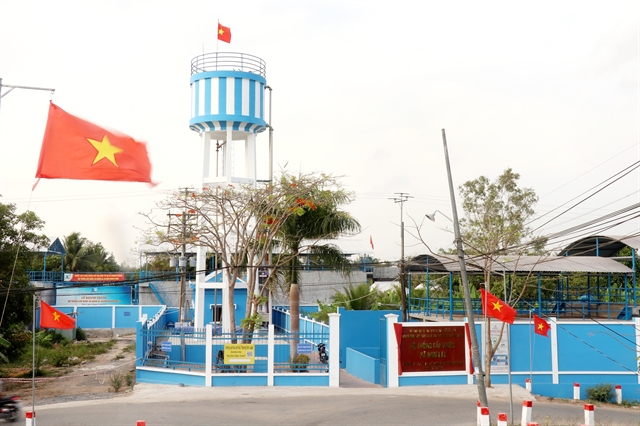 |
| A specialised team inspecting the dyke on the right bank of the Đuống River in Bắc Ninh. — VNA/VNS Photo Đỗ Huyền |
HÀ NỘI — Việt Nam is vulnerable to climate change and natural disasters, so the nation's dykes not only play a crucial role in protecting lives and property, they also safeguard important economic and political centres of the country from storms and floods.
Many localities have been investing in constructing, renovating, upgrading, maintaining and preserving the dykes to ensure the safety of the system.
According to the Department of Dyke Management and Natural Disaster Prevention and Control, Việt Nam has developed an extensive dyke system spanning approximately 9,700km, including more than 2,770km of high-grade dykes, over 1,100km protective embankments, more than 1,500 sluices, over 600 flood and storm warehouses and over 1,400 dyke watchtowers.
However, many sections of the system, made up largely of earth embankments, have deteriorated due to rain, floods and storms.
Efforts in readiness
The north-central province of Thanh Hóa boasts the largest dyke, reservoir and dam system in the country, protecting 2.8 million people in 17 districts, towns and cities, covering 242 communes.
To ensure the safety of dyke structures and reservoirs and to be proactive in facing up to natural disasters, Thanh Hóa Province is investing in constructing, renovating, upgrading, maintaining and preserving dykes that are at risk of being unsafe before the 2024 rainy season.
According to Nguyễn Hoài Nam, deputy director of the provincial Department of Agriculture and Rural Development, 65 dyke-related projects are already underway and due to be completed on schedule, ready to be put into use by June 30.
However, citizens of places like Trịnh Thị Sơn from Giang Đông Village, Vĩnh Hòa Commune, Vĩnh Lộc District, Thanh Hóa Province are still concerned about how robust those dykes are.
"We hope that the authorities will reinforce the dyke system soon to ensure the safety of households living near the dykes," said Sơn.
In reassuring residents, Nam said that the department will continue to closely monitor the current state of dyke structures and planning to review, evaluate, and promptly advise the provincial People's Committee on resource allocation.
Right on the money
Located downstream of the Red River and Thái Bình River basins, the northern province of Bắc Ninh has three rivers, the Đuống River, Thái Bình River, and Cầu River. To prevent flooding, the district will need to renovate and maintain its dyke system to ensure the safety of these watercourses.
Nguyễn Hữu Dũng, deputy director of the Department of Water Resources of Bắc Ninh Province, said that before the flood season, authorities have deployed forces to review, inspect and evaluate the entire dyke and irrigation system in the area. With 196km of dykes, 105 sluices and 40 embankments, Bắc Ninh has an established solid barrier to protect it against natural disasters, which helps reassure the local population.
With the motto of acting early and proactively to reduce the damage caused by natural disasters to the lowest level, Bắc Ninh is determined to maintain the safety of main dykes, secondary dykes and prevent sudden dyke breaches.
Every year the province regularly evaluates and inspects the status of flood and waterlogging prevention structures, proactively renovating and repairing any damages arising beyond the assigned renovation plan. Notably, the province allocates a large budget for this activity.
Đặng Công Hưởng, deputy director of the Department of Agriculture and Rural Development of Bắc Ninh Province, emphasised that the province has based its recommendations on central regulations to advise the provincial People's Committee to submit to the provincial People's Council a resolution on dyke maintenance and preservation.
According to Hưởng, each year, the province allocates approximately VNĐ100 billion (US$4 million) for dyke maintenance and preservation.
The investment pays dividends, with resident Khúc Thị Hạnh, from Thuận Thành Ward, expressing her gratitude and relief for the work already put in.
"We live near the dyke, so we are very afraid of termites and debris coming into the living area whenever floods and storms come," Hạnh said. "Thanks to the State's attention to the local dyke investment and renovation, the dyke system has become more solid and secure, making the local people to feel more assured during the flood season." — VNS
 Society
Society









.jpg)










